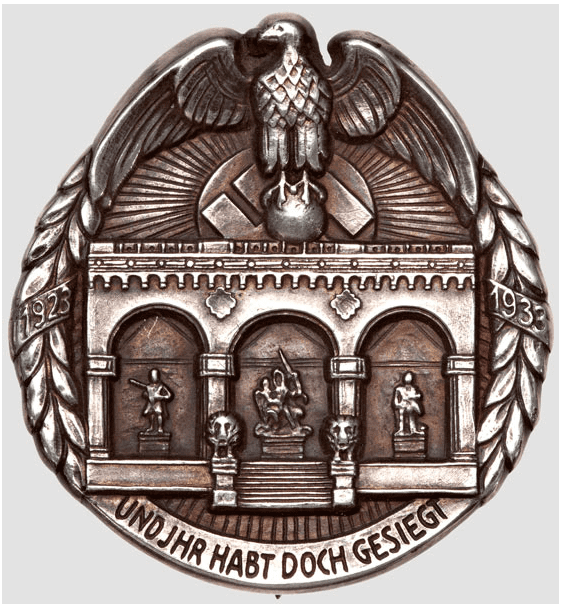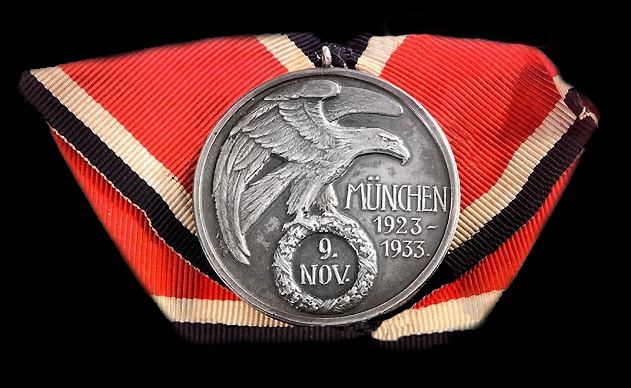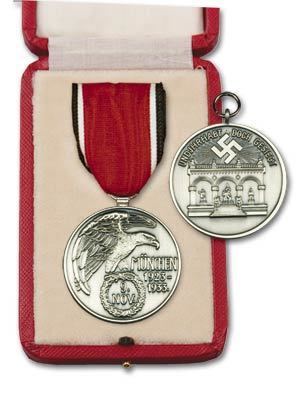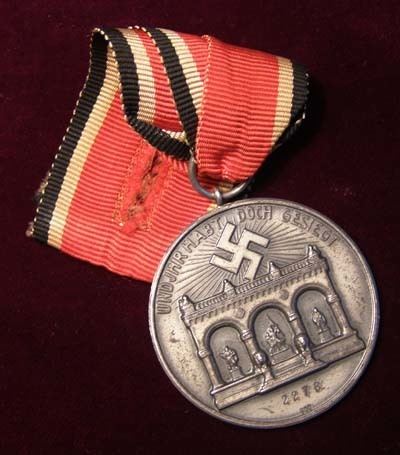Country Germany Established March 1934 | Type Political decoration | |
 | ||
Eligibility Members of the Nazi Party or cadets from the Munich Infantry School who marched in support of the Hitler-Ludendorff-Putsch Awarded for Participants in the 1923 putsch and been members of the party or one of its formations before January 1932 | ||
Dogs blood order full album
The Blood Order (German: Blutorden), officially known as the Decoration in Memory (of the Munich putsch) of 9 November 1923 (German: Medaille zur Erinnerung an den 9. November 1923), was one of the most prestigious decorations in the Nazi Party. Instituted in March 1934, the medal is solid silver, with the obverse bearing a depiction of an eagle with a wreath in its talons, with the date 9.Nov. within the wreath and the inscription München 1923-1933 to the right. The reverse bears a picture of the Feldherrnhalle in Munich (where the coup ended in defeat), a swastika and the inscription: UND IHR HABT DOCH GESIEGT ("...and you were victorious after all").
Contents

History

The first issue of the decoration, struck in 99% pure silver, was awarded to 1500 participants in the putsch who had also been members of the party or one of its formations before January 1932 (continuous service), or had been cadets from the Munich Infantry School who marched in support of Ludendorff. All medals were numbered (except Hitler's and Göring's) and awarding was done very carefully. Unlike other medals, the ribbon was worn on the right breast of the uniform tunic in the form of a rosette and the medal sometimes was pinned on and suspended below.

In May 1938, to the dismay of the putsch participants, the award was extended to persons who had (a) served time in prison for Nazi activities before 1933, (b) received a death sentence which was later commuted to life imprisonment for Nazi activities before 1933, or (c) been severely wounded in the service of the Party before 1933; subsequently it was further extended to members of the Austrian Nazi Party who had participated in the 1934 February Uprising or July Putsch, or who had received significant prison time or injuries for National Socialist activities. It could also be bestowed on certain other individuals at the discretion of Adolf Hitler, the last recipient being Reinhard Heydrich (posthumous). These subsequent medals were struck in 80% silver with serial numbers above 1500 and did not carry the maker's name (J. FUESS MÜNCHEN) as the Type I medals did.
If a holder of this medal left the party, the medal would have to be relinquished.

In total 16 women received the award, two from the 'Altreich' (Eleonore Baur and Emma Schneider) and 14 from Austria. Given the number of original marchers in the putsch, the number of awards given under the 1938 extensions (436), and the awards for outstanding service under those same extensions, the total number of recipients numbered fewer than 6,000.

In November 1936, Hitler gave new "orders" for the "Orders and Awards" of Nazi Germany. The top NSDAP awards are listed in this order: 1. Coburg Badge; 2. Nürnberg Party Badge of 1929; 3. SA Treffen at Brunswick 1931; 4. Golden Party Badge; 5. The Blood Order; followed by the Gau badges and the Golden HJ Badge.

